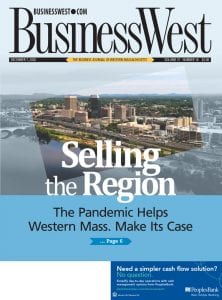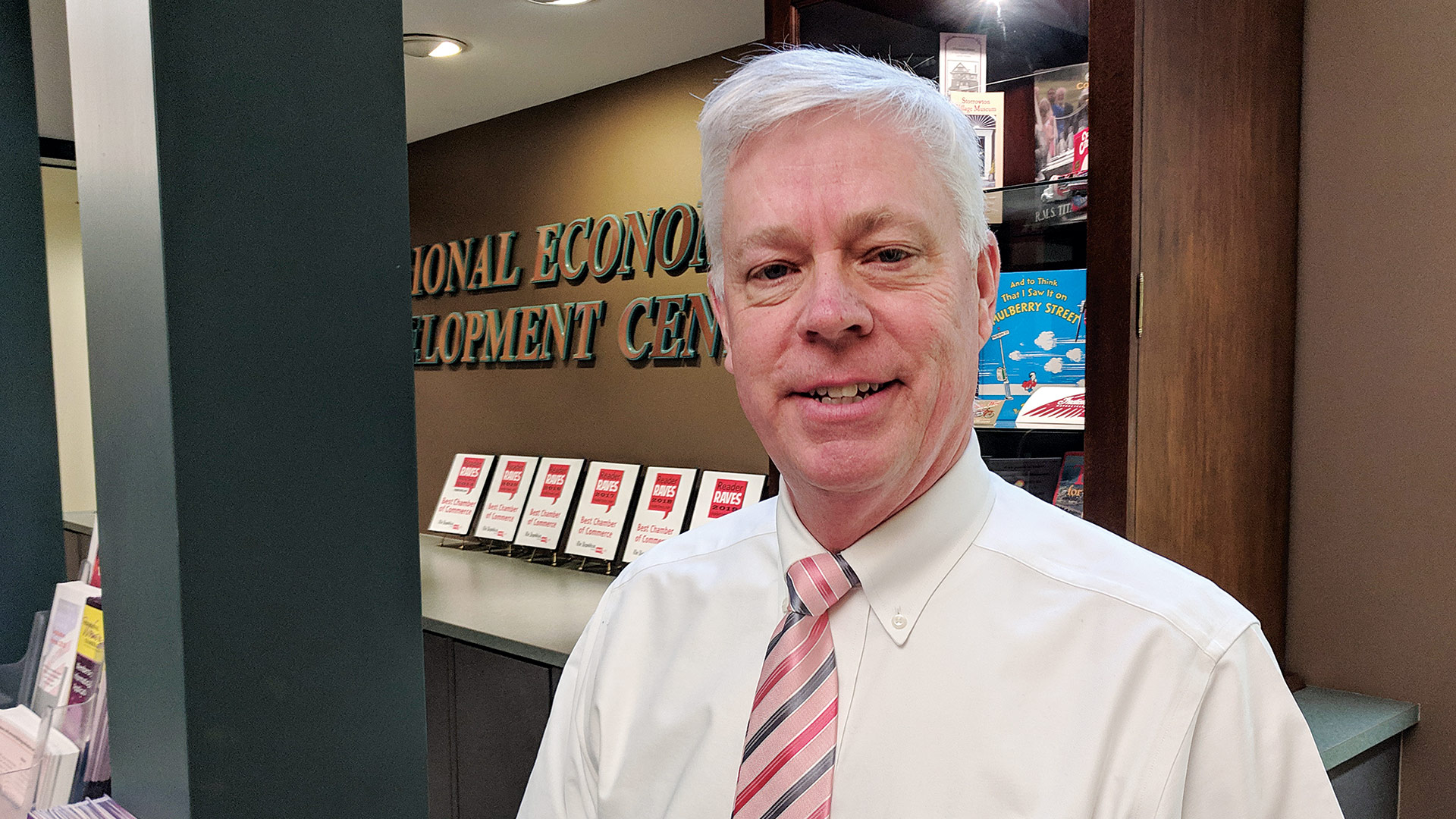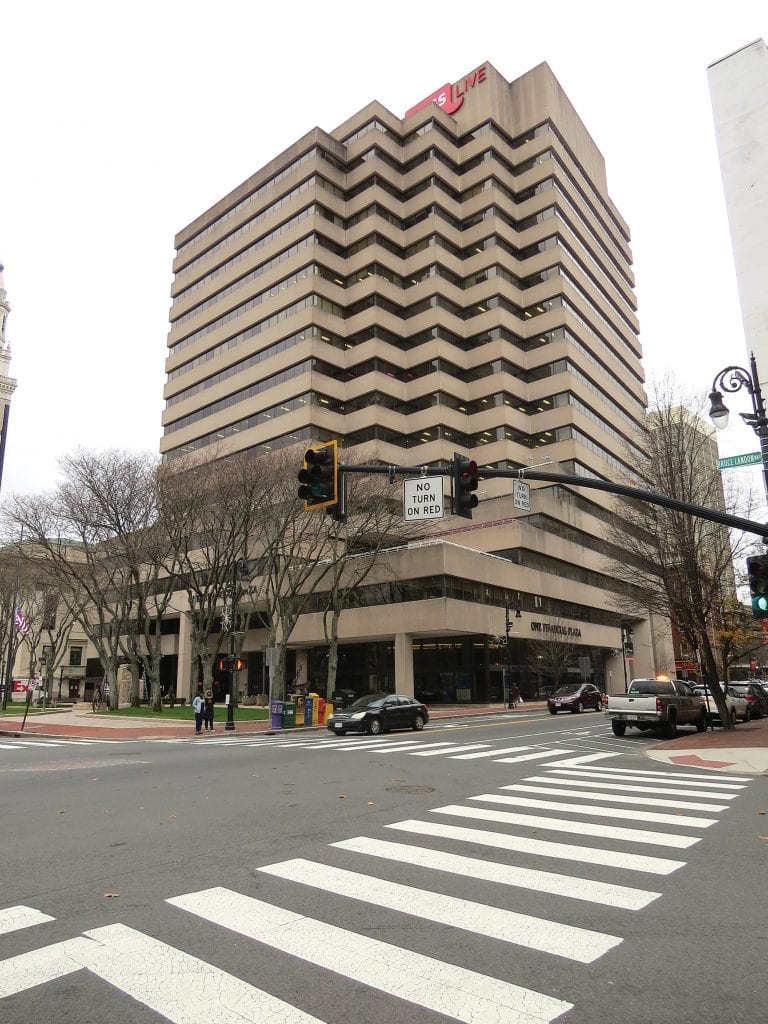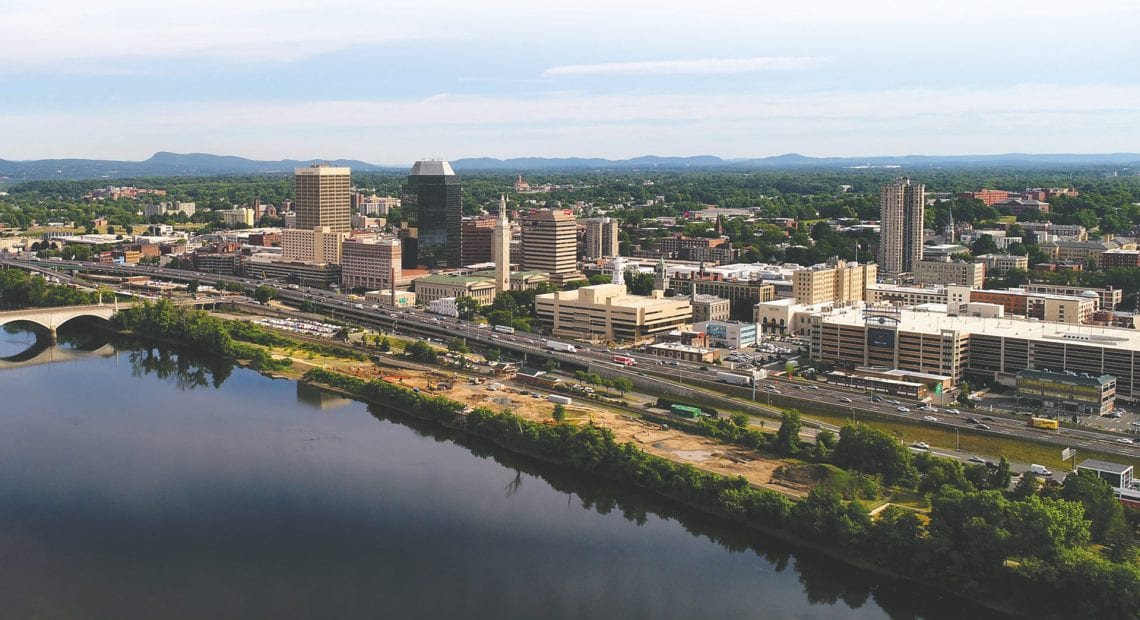Selling the Region
 Rick Sullivan was talking about the pandemic … and about how it just might present some opportunities for this region to prompt companies currently located in expensive office buildings in pricey urban centers to at least look this way.
Rick Sullivan was talking about the pandemic … and about how it just might present some opportunities for this region to prompt companies currently located in expensive office buildings in pricey urban centers to at least look this way.
And he paused to reference an article he had just read that morning about how those in the Aloha State were thinking pretty much the same thing.
“Hawaii seeks to be seen as a remote workplace with a view,” he said, referencing the headline he had just read. “They’re making the same pitch we are — it’s a great place to work remotely … with a view. It’s the same concept — we have great outdoor recreational opportunities, we have the mountains, the skiing, the rafting, and the biking.”
Sullivan, president and CEO of the Western Massachusetts Economic Development Council, quickly acknowledged that Western Mass. is not Hawaii. But to one degree or another, it can, as he noted, offer at least some of the same things — like those nice views. And a sticker price — for commercial real estate and many other things — far, far below not only Boston, Cambridge, and New York, but many other regions of the country as well.
There is a certain quality of life that has always been here but has taken on perhaps greater importance in the midst of a pandemic as people — and some businesses as well — are starting to think about whether they want or need to be in an urban setting.
These factors may be enough to turn some heads, said Sullivan and others we spoke with, all of whom noted that, as the pandemic approaches the 10-month mark, the emphasis is shifting locally — from talk about how there may be an opportunity to seize, to action when it comes to seizing such an opportunity and getting those heads to turn.
Nancy Creed, president of the Springfield Regional Chamber, is taking action in the form of online tools, through which interested businesses, agencies, and individuals can obtain needed information about the region and even explore options within the commercial real-estate market for a new home.
“We’ve invested in a whole suite of tools, one of which has seven or eight tools that basically walk a business through everything from why the Springfield region is a good place to start a business or expand a business, all the way through where your competitors are, where your customers are, and where your workers are,” she said of a product called Localintel. “And then it continues with information about where to find real estate that fits your purpose; it heatmaps everything for you.”
Meanwhile, Sullivan said the EDC, which has received an uptick in the number of incoming calls from businesses and site selectors looking to learn more about the region, has made efforts to promote the area and take advantage of pandemic-related trends and movements as one of its strategic priorities for the coming year.

Rick Sullivan says that, like Hawaii, Western Mass. can position itself as an effective place to work — with a view.
“Part of our strategic plan is to increase the marketing for such efforts and make that pitch,” he explained. “We’re going to work through what that looks like, but we are certainly not equipped to do a multi-million-dollar marketing campaign. I do think we can raise our profile and make that pitch.”
But while there is opportunity in the midst of this pandemic, challenges exist as well.
Evan Plotkin, president of NAI Plotkin and a long-time promoter of Springfield and especially its downtown area, said there are some lingering perceptions about the city and region — regarding everything from workforce to housing stock to public safety — that have to be overcome. Also, there remains considerable work to do when it comes to simply getting the word out about Western Mass. and all that it has to offer.
Meanwhile, as for trying to convince companies and state agencies to move here — something Plotkin has been doing aggressively for some time now — he said there are cost and logistical concerns that remain stumbling blocks.
“When I talk to people about this, I see a lot of heads nod in agreement — they see why this region makes sense on many levels,” he said. “The pushback comes with people not wanting to uproot themselves and make that move. We have to be able to overcome that.”
For this issue, BusinessWest takes an in-depth look at how the pandemic may change the landscape in some positive ways, and also what has to happen for the region’s fortunes to improve.
Moving Sentinents
Plotkin told BusinessWest that, whenever he meets attorneys or other professionals from Boston or New York — and that’s often — he invariably makes a point of asking them where they’re based and how much they’re paying to do business there.
He then offers a pitch for this region, letting the individual across the table know that things are less expensive and — in some ways, at least — better here.
“I’ll say, ‘you know what … you can probably do a lot better here,’” he said. “I’ll tell them, ‘if you have a big office, maybe you can keep an office in Boston and move your back-room operations here.’”
Moving forward, the assignment for the region, said those we spoke with, is to take these pitches, these efforts to sell the region, to a higher plane — now more than ever, because of what the pandemic has shown people.
In short, Sullivan noted, it has demonstrated that people can work remotely, and effectively, and that companies don’t necessarily need to lease as much space as they’re leasing now, or lease it in high-traffic (although not at this particular moment in time), high-rent areas.
It has also shown professionals, and especially young people, that they don’t necessarily have to live in one of those urban areas — like Boston, Seattle, or San Francisco — to get the kind of rewarding, high-paying jobs they’re all looking for.
“Because of the pandemic, quality of life has become something that people can really consider when they’re determining their work/life balance — you don’t need to be in the expensive big cities to be able to have the kinds of jobs people are looking for,” he explained. “You can really focus on your work/life balance, and you can really focus on your quality of life, and that’s where Western Massachusetts really shines. You can be working remotely, you can be telecommuting, and you can have that quality of life, that cost of living, that we have in Western Mass. that’s very attractive.”
As that story about Hawaii makes clear, Western Mass. is certainly not alone in this thinking. Indeed, there will be plenty of competition. But in this region, there is, by most all accounts, more recognition of possible opportunities and more of a combined enthusiasm for seizing it.
“I think there’s more of a critical mass,” Creed noted in reference to the collective efforts she’s seeing. “Before, it was this organization or this person; now, everyone is seeing it, and I’m hearing that more real-estate brokers are actively seeking businesses to come here.

Evan Plotkin wants to convert three floors within 1350 Main St. to space where people can both live and work, an example of how the region may be able to benefit from the changes brought about by the pandemic.
“And I’m hearing it from business owners as well,” she went on. “They’re saying, ‘why do I need to have downtown space in the larger markets?’ So I think there is opportunity.”
But there have always been opportunities for this region when it comes to effectively selling its quality of life and lower cost of living. The $64,000 question at the moment is whether COVID will become a type of X-factor and drive interest in an area that has traditionally drawn that kind of head-nodding that Plotkin talked about, but certainly not as much action as most would like.
And the answer to that question is certainly unknown at this point. But it’s clear that there is now growing interest in at least trying to sell the region in a more aggressive way.
Measures like Localintel, a step recommended in the Future Cities study released in 2016, are a part of such efforts, said Creed, noting that the platform is currently being tested and should be on the chamber’s website soon.
The chamber is partnering with the city, which will also be able to put Localintel on its website, she went on, adding that the chamber will be adding another tool specifically for startups, partnering with Valley Venture Mentors in that initiative.
“It walks you through all the steps you need to go through to start your business,” she explained. “And then, you go to the next suite of tools, which will walk you through the customers, the competition, and more.”
In Good Company
Beyond simple lessons in geography regarding where companies can be located, the pandemic has provided some other lessons as well, said Sullivan, especially those related to supply chain and what can happen when overseas links in that chain are broken.
Indeed, a number of major manufacturers, as well as local anchor businesses such as hospitals, colleges, Big Y, and others, have expressed interest in making their supply chains more reliable, he told BusinessWest, adding that these sentiments would indicate that there are opportunities for this region to build on its already-strong manufacturing sector.
“We’ve seen, partially because of the pandemic, that supply chain, when it’s overseas and all split up, is much less reliable,” he explained. “That’s an opportunity for us because manufacturing is one of our strengths in this region.
“This is just one of the ways that we can come out of this pandemic in a stronger position than when we went into it,” he went on. “We need to be able to move forward where there are opportunities that we’ve identified.”
And the growing number of phone calls to the EDC, and the nature of those calls, would seem to indicate some potential opportunities, Sullivan went on, adding that there have been calls from companies looking for more of a campus-like setting; from manufacturers looking to move operations onshore; from call centers looking for smaller, more affordable facilities; and even from modular-home builders intrigued by the region’s accessibility and highway infrastructure.
Such calls lead to the inevitable questions about whether the region has the ability to actually move forward in the fashion he suggests. Does it have the housing inventory? Does it have an adequate workforce? Does it have communities that would attract businesses and individuals? Does it have the vibrancy and amenities needed to attract young people?
Plotkin has been answering some of these very questions as he vies to make the property he co-owns, 1350 Main St., home to what’s being called a remote-work hub that would enable people to live and work in the same building, a concept that has become more intriguing as the pandemic has lingered.
As he talked with BusinessWest, Plotkin was preparing to meet with those looking to site such facilities — he believes he has made it to the next round in the process — and state his case. He said he’s got a solid one, when considering both his building and the three full floors he’s proposing for a remote-work hub and this region, but as he was preparing his response to the RFP, he realized that, while the region has a lot to sell, it has to work harder at selling it.
“It’s all about salesmanship and about trying to overcome some of the negativity and the obstacles,” he explained. “It’s trying to overcome a perception that doesn’t reflect what we really have here.”
And one of the more critical perceptions, or misperceptions, in his view, at least, involves workforce and fears that this region cannot support certain types of industries or specific businesses.
Nancy Creed
“I think there’s more of a critical mass. Before, it was this organization or this person; now, everyone is seeing it, and I’m hearing that more real-estate brokers are actively seeking businesses to come here.”
“There’s a fear that workers wouldn’t want to live in Springfield,” he explained, “and also the fear that their chances of finding the talent they need in Springfield and the surrounding region would be harder; that’s the biggest impediment I’m seeing.”
Meanwhile, the pandemic certainly hasn’t helped matters, he said, adding that, before it arrived, the city was enjoying some momentum. But many of its major attractions, from its hockey team to its symphony orchestra to its $1 billion casino, are shut down or operating much differently than before the pandemic.
Taking the long view, though, he said these institutions will return, and they will be part of an attractive package the region can market, a package that seems to make more sense with each passing day living and working during a pandemic.
Bottom Line
Time will obviously tell whether Western Mass., Hawaii, or anywhere else will benefit greatly from the lessons learned from COVID-19 and the trends emerging from this unique time in history.
What is apparent at the moment is that this region seems committed to at least trying to seize what appears to be a clear opportunity to benefit from attitudes about where companies can and should be located, and how they can and should be conducting business.
“Let’s just say I’m keeping my fingers crossed,” Creed said.
So is everyone else.
George O’Brien can be reached at [email protected]






